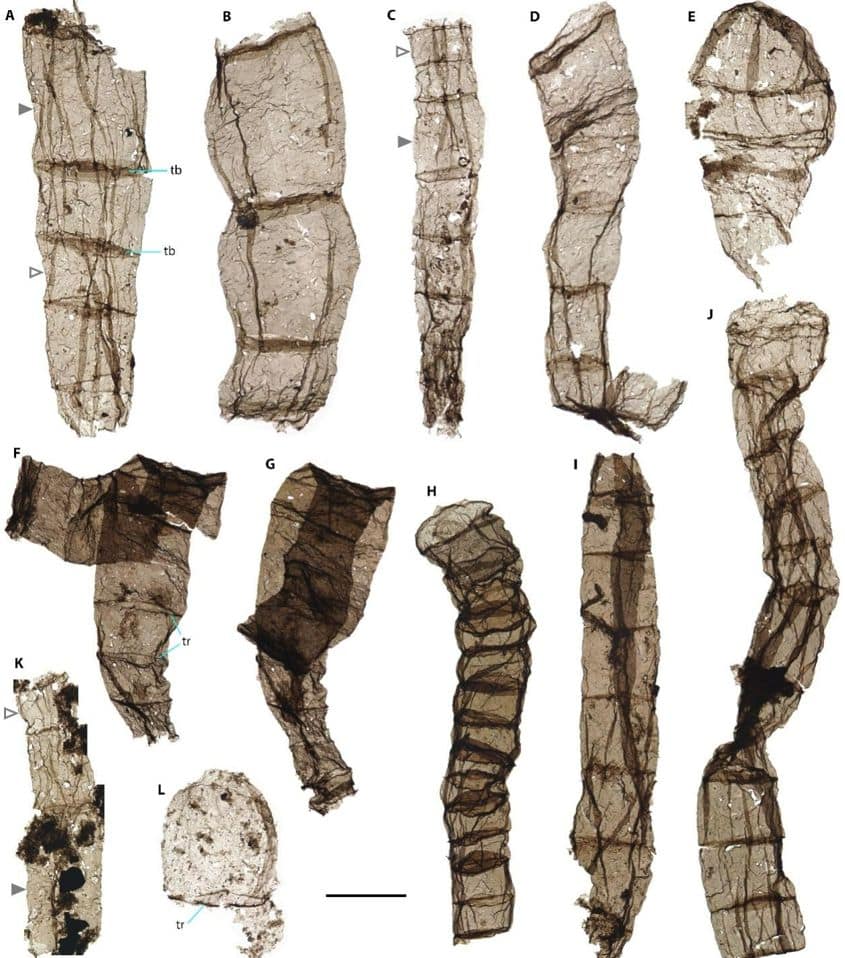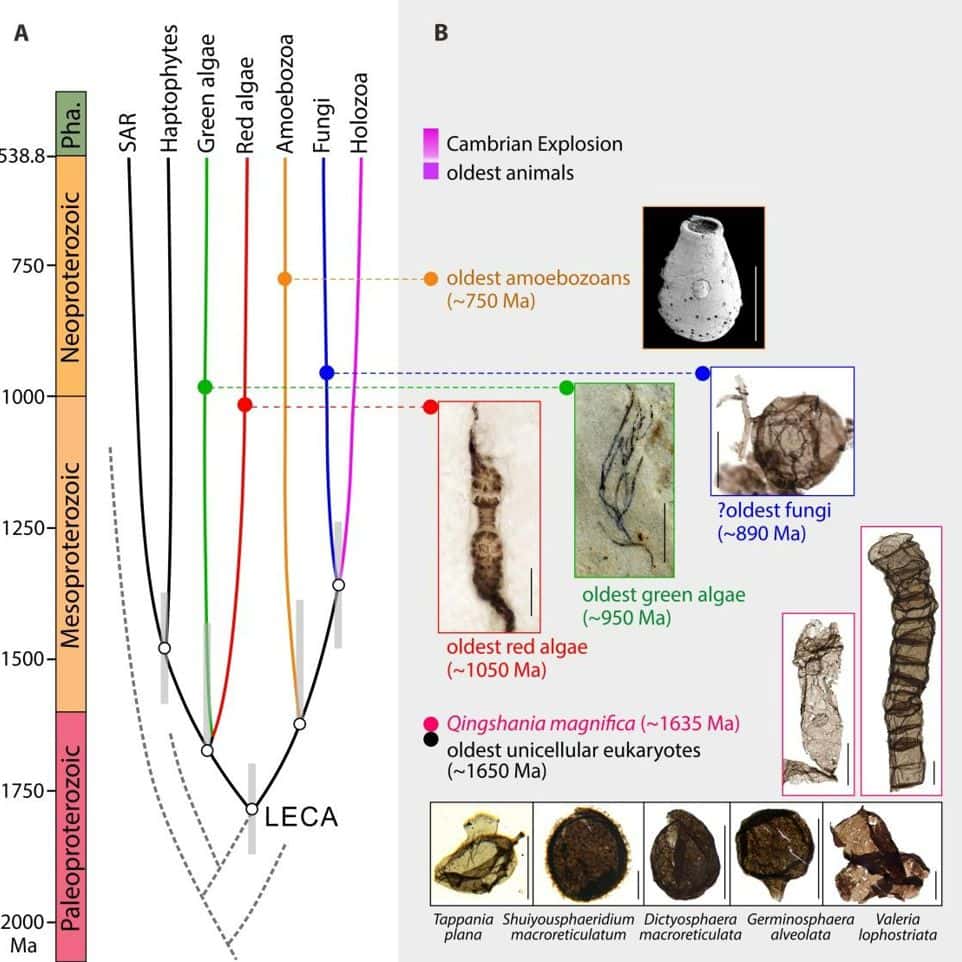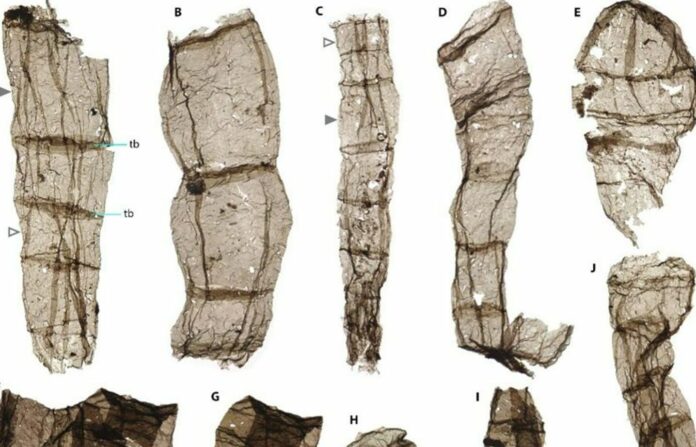New fossil findings dating back 1.6 billion years challenge previous timelines, extending the emergence of multicellular life by tens of millions of years. This breakthrough sheds light on the earliest forms of complex life on Earth and reshapes our understanding of evolutionary timelines.
In a paper published in Science Advances, researchers led by Prof. ZHU Maoyan from the Chinese Academy of Sciences Nanjing Institute of Geology and Palaeontology announced the finding of 1.63 billion-year-old multicellular fossils in North China.
The finely preserved microfossils are presently regarded as the most ancient evidence of multicellular eukaryotes. This research marks another significant milestone following the scientists’ prior identification of eukaryotic fossils, some of considerable size, in North China’s Yanshan region. Moreover, it extends the timeline of multicellularity in eukaryotes by approximately 70 million years.
Multicellular eukaryotes include all forms of complex life on Earth, such as various mammals, land plants, macroscopic fungi, and seaweeds. Multicellularity, which is often recognized as a significant turning point in the evolution of life on Earth, is essential for eukaryotes to acquire organismal complexity and huge size. On the other hand, when eukaryotes developed this innovation is still unknown to scientists.

Red and green algae, as well as possible fungi, are examples of eukaryotes with basic multicellularity that have been shown to have existed as early as 1.05 billion years ago, according to fossil records. Although multicellular eukaryotes have been identified in older records, the majority of them are debatable due to their basic shape and lack of cellular organization.
“The newly discovered multicellular fossils,” as explained by MIAO Lanyun, one of the researchers, “come from the late Paleoproterozoic Chuanlinggou Formation that is about 1,635 million years old.
“They are unbranched, uniseriate filaments composed of two to more than 20 large cylindrical or barrel-shaped cells with diameters of 20–194 μm and incomplete lengths up to 860 μm. These filaments show a certain degree of complexity based on their morphological variation.”
The filaments are constant, or tapered throughout their length, or tapered only at one end. Morphometric analyses demonstrate their morphological continuity, suggesting they represent a single biological species rather than a discrete species. The fossils have been named Qingshania magnifica, 1989, a form taxon with similar morphology and size, and are described as being from the Chuanlinggou Formation.
A particularly important feature of Qingshania is the round intracellular structure (diameter 15–20 μm) in some cells. These structures are comparable to the asexual spores known in many eukaryotic algae, indicating that Qingshania probably reproduced by spores.
In contemporary ecosystems, uniseriate filaments are prevalent among both prokaryotes (bacteria and archaea) and eukaryotes. The combination of large cell size, a broad spectrum of filament diameters, morphological diversity, and the presence of intracellular spores highlights the eukaryotic nature of Qingshania, as no known prokaryotes exhibit such complexity.

Filamentous prokaryotes typically display small dimensions, ranging from 1 to 3 μm in diameter, and are distributed among over 147 genera across 12 phyla. While certain cyanobacteria and sulfur bacteria can attain substantial sizes, up to 200 μm in thickness, these larger prokaryotes possess simplistic morphologies characterized by disc-shaped cells and do not reproduce via spores.
Some green algae are the best contemporary counterparts, although filaments may also be seen in fungi, oomycetes, and other types of eukaryotic algae, such as red, brown, yellow, and charophytes.
“This indicates that Qingshania was most likely photosynthetic algae, probably belonging to the extinct stem group of Archaeplastids (a major group consisting of red algae, green algae and land plants, as well as glaucophytes), although its exact affinity is still unclear,” added MIAO.
Additionally, using three cyanobacterial taxa as a point of reference, the researchers used Raman spectroscopy to assess Qingshania’s eukaryotic affinity from the standpoint of chemical composition. Two large peaks that are indicative of disordered carbonaceous materials were seen in the Raman spectra.
Moreover, a modest degree of metamorphism was indicated by the predicted burial temperatures using Raman parameters, which varied from 205 to 250 °C. Qingshania’s eukaryotic affinity is further supported by the finding that the carbonaceous matter of Qingshania differs from that of cyanobacterial fossils, as shown by principal component analysis of the Raman spectra, which separated Qingshania and the cyanobacterial species into two separate groups.
Unicellular forms from late Paleoproterozoic deposits (~1.65 billion years ago) in Northern China and Northern Australia are now the earliest unequivocal eukaryotic fossils. Qingshania emerged within a short time after these unicellular forms, suggesting that eukaryotes had basic multicellularity at a relatively early stage of their evolutionary development.
Because eukaryotic algae (Archaeplastids) evolved after the last eukaryotic common ancestor (LECA), the discovery of Qingshania, if truly algal, lends support to the early appearance of LECA in the late Paleoproterozoic—which is consistent with many molecular clock studies—rather than the late Mesoproterozoic of about 1 billion years ago.
Image Credit: MIAO LANYUN
